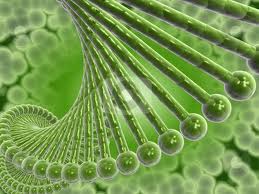

After the judgment that DNA's information was prearranged in its sequence of nucleotides (A, C, T, and G), it was supposed that one could find this series through a technique of analyze a large number of identical strand of DNA and identify each nucleotide in order of its appearance in the DNA sequence. This technique was ultimately discovered in 1977 by Fredrick Sanger. His method, known as Sanger Sequencing, relied on two main principles.

DNA can be alienated by size. This was temporarily discussed in the section on Laboratory Techniques with regard to gel electrophoresis. Keep in mind that DNA is negatively charged, it will migrate towards the positive electrode when an electric current is applied. When placed in a gel composed of polyacrylamide beads, larger strand of DNA will migrate through the gel slower. By the way, the use of polyacrylamide gels instead of agarose gels allow for much greater resolution in untying strands of DNA by size. It allows one to actually distinguish a strand of DNA 400 base pairs long from a strand of DNA 401 base pairs long. As a result, polyacrylamide gels would be able of resolving even 1 base pair differences in DNA, making this very useful for sequencing.
In adding, the chemical structure of DNA allows geneticists to influence its normal function and use it to recognize the series of a strand of DNA. As was discuss in the section about DNA duplication, cells have a protein called DNA Polymerase II that adds nucleotides complementary to the original strand, allowing it to form two identical strands of DNA from a template strand. To do this, it adds one nucleotide complementary to the template strand at a time. In order to do this, Polymerase requires a DNA Primer, a short strand of DNA complementary to the end of the template strand for a 3' OH group. The following diagram shows the structure of a normal nucleotide (dNTP)